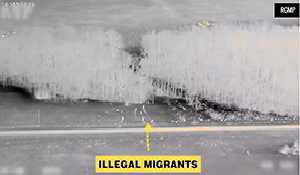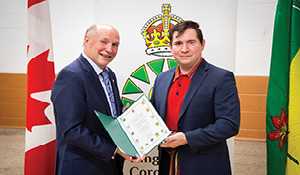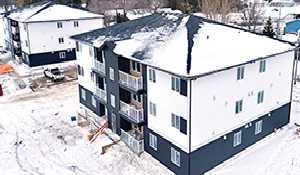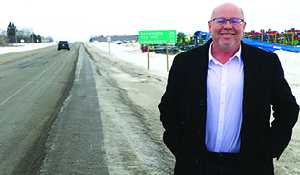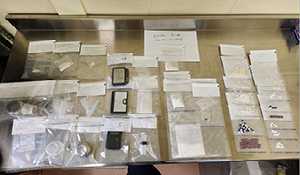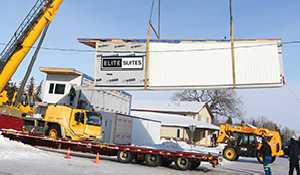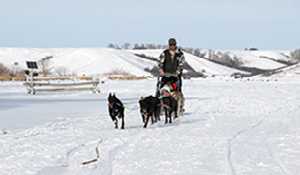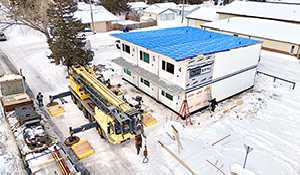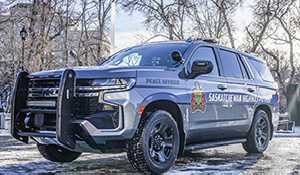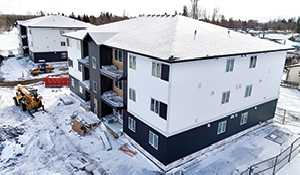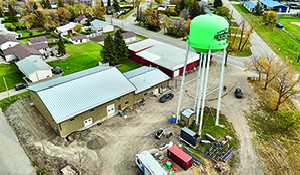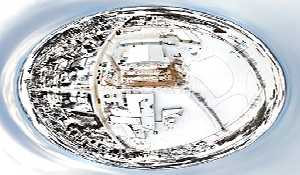Enbridge plans Line 3 reclamation this summer
Crew of 250 will be needed to complete work in Moosomin area
April 22, 2020, 4:57 am
Kevin Weedmark
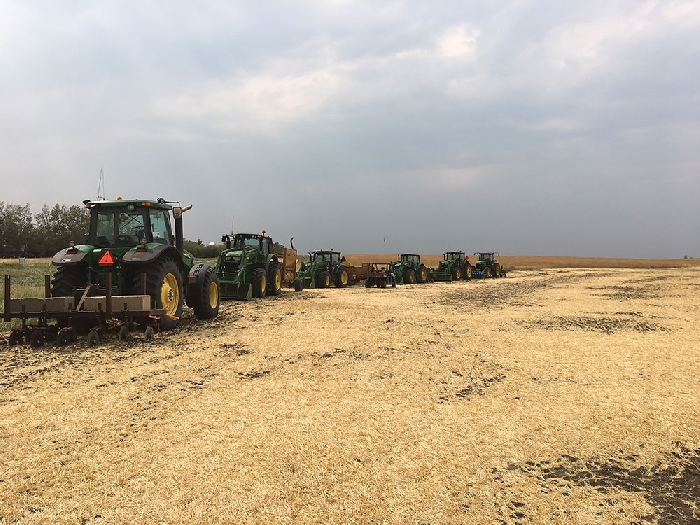

Enbridge says the final surface reclamation work on the Line 3 right-of-way in the Moosomin area is a priority for the company and it is planning to start that work with a crew of 250 in the Moosomin area in mid-June.
“The reclamation work is scheduled for mid-June but will depend on a number of factors,” David Coll, Senior Communications Advisor at Enbridge told the World-Spectator Friday. “In response to the Covid-19 pandemic, Enbridge continues to evaluate our existing and planned project work regularly while prioritizing work that is essential to keeping our system running safely and reliably. This includes final reclamation of the Line 3 pipeline right-of-way in southeastern Saskatchewan and southwestern Manitoba.” The work that still needs to be done covers about 110 kilometres of the right-of-way, including grading, replacing topsoil and final cleanup.
The project will require a workforce of about 250 people. “We are finalizing plans for this work, however that will depend on a number of factors including the latest guidance provided by landowners, local, federal and international public-health and government authorities,” said Coll.
When the work is done on the remaining right-of-way in the Moosomin area, Coll says it will be done with safety as the top priority. “At Enbridge, safety is our top priority. That is why we are taking robust, proactive measures to protect the health and safety of our employees and the public during the COVID-19 pandemic. Across North America, we are operating at a heightened level of emergency response preparedness and staying closely connected to recommendations from public health authorities and medical experts.
“We are prepared and are rolling out plans to ensure the continued safe operation of our facilities, including a COVID-19 pandemic protocol to ensure we can continue to execute projects safely. The protocol sets common expectations and ‘ways of working,’ including proper social distancing, hand hygiene, site-access health assessments and other key activities. Regardless of start date, we will follow our COVID-19 Safe Work Protocol for construction projects which includes specific measures such as: specialized PPE and numerous hand wash stations; dedicated COVID-19 maintenance workers to continuously sanitize door handles, handrails, vehicles and surfaces with which workers and office staff routinely come into contact; social distance co-ordinators to ensure proper social distancing is being maintained at all times. Crews would stay in holiday trailers, campgrounds, motels, apartments, houses and private suites, and follow the same social distancing protocols as any others occupying these types of accommodations.”
Both the federal and provincial governments recognize both energy infrastructure and agriculture as essential services. “The final Line 3 reclamation work will ensure the return of farmland to productive use as soon as possible,” said Coll.
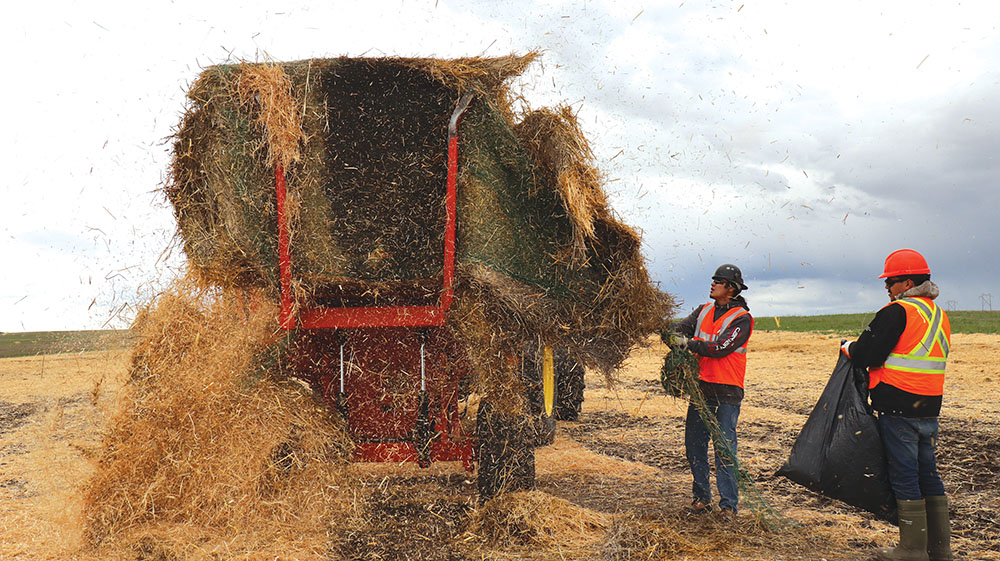

Funding for communities
Coll said Enbridge is also trying to help organizations with funding in the communities where it operates.
“The COVID-19 pandemic has had a deep impact in the communities in which we operate,” he said.
The COVID-19 pandemic has had a deep impact in the communities in which we operate
“We’re providing support in our communities by advancing funds to respond and provide relief to those who are most vulnerable. Our teams in our operating regions are working closely with our nonprofit community partners, our closest Indigenous neighbors, and local governments to identify where resources are needed most—including food banks, social service agencies, mental health organizations, first responders and healthcare providers.”
Pipeline completed in 2019
Construction of the $5.3-billion Canadian portion of the Line 3 Replacement Program is complete, and the new Line 3 began commercial service in December 2019.
The Line 3 replacement pipeline is a “mixed-service” line, meaning it carries a variety of crude oils, including sweets, light and high sours, and light synthetics.
Shippers are permitted to ship crude oil blends or types on Enbridge’s liquids pipelines system that meet quality specifications set by Enbridge, and filed with the Canada Energy Regulator. This includes heavy crudes such as diluted bitumen. Crews were in the Moosomin area in the summer of 2018 to work on the pipeline in southeastern Saskatchewan and southwest Manitoba.
Crews were stationed in Moosomin for reclamation work on the Line 3 right-of-way in 2019, but the wet fall meant the work wasn’t completed in the Moosomin area.
Decommissioning
The next step for Line 3 will be decommissioning the original line, which is scheduled for the Moosomin area in 2022. In advance of the potential decommissioning of a line, engineering and environmental assessments are completed in consultation with landowners.
“This summer, we will be reaching out to landowners, municipalities and Indigenous communities and filing a required decommissioning engagement plan with the Canada Energy Regulator later this year,” said Coll.
“We plan to begin field work for decommissioning of the Line 3 pipeline in the spring of 2021. Decommissioning of Line 3 will be completed in phases over two years and is anticipated to begin as early as the spring of 2021, weather permitting. The work has been divided into four segments, from Hardisty to Gretna, each of which will require about 120 workers and take approximately 4-6 months to complete. The Regina to Cromer segment is currently anticipated to begin in 2022.”
Once the National Energy Board approves a decommission application, the process involves:
• Removing the vast majority of crude oil from the pipeline with specially designed cleaning instruments;
• Wiping and cleaning the pipeline, using a combination of cleaning instruments and cleaning solution;
• Physically disconnecting the pipeline and sealing it off from active operational facilities, such as pump stations;
• Segmenting the pipeline, where required, by creating permanent physical barriers inside the pipe (including gate valves and permanent segmentation plugs) to prevent the pipeline from acting as a water conduit. Tweet

